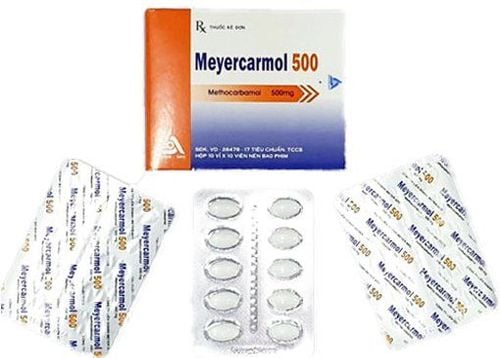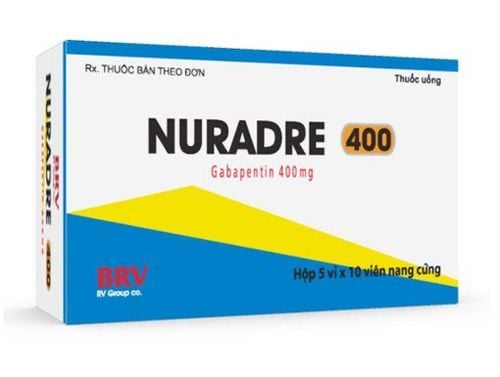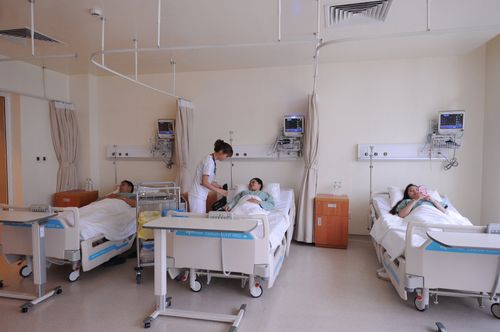This is an automatically translated article.
Treatment for sciatica depends on the cause and severity of the pain. The main treatment is rest, exercise, medication, and finally surgery.1. Principles of sciatica treatment
Sciatica and its treatment are mainly based on the principle of releasing the compression, promoting circulation, blood circulation and nourishing the musculoskeletal muscles to treat and prevent the disease, specifically as follows:Treatment according to the cause of the disease (most often due to herniated disc in the lumbar spine). Reduce patient pain and restore movement quickly. Prioritize medical treatment for mild and moderate sciatica cases. Surgical intervention is considered when there are complications related to movement, sensation. For sciatica due to malignancy: Conduct spinal decompression surgery combined with cancer treatment.
2. How to treat sciatica?
Sciatica causes different degrees of discomfort for each person. There are many effective treatments for sciatica, but it still depends on the cause and severity of the pain. Most patients with sciatica need only medical treatment with rest and medication, which improves symptoms within 6 weeks. Surgical treatment of sciatica is considered when medical measures fail.2.1. Non-surgical (medical) treatment Most sciatica symptoms get better within a few weeks with home remedies. If the pain is mild and interferes with daily activities, your doctor will encourage you to combine some basic measures such as:
Physiotherapy: This is a conservative treatment for sciatica, bringing back the best results. effective, safe, which uses physical factors (such as heat, light, electromagnetic fields or sound waves) and mechanical effects (such as stretching, compression) to treat pain for patients. Keeping up with physical therapy will help improve posture, relieve pressure on the sciatic nerve, and help relieve pain. Lower back stretch: Helps relieve sciatica pain. Practice Sciatica Relief Exercises: Inflammation usually improves when the patient moves. Therefore, short walking exercises can reduce pain. To ensure that the correct postures are effective and to avoid nerve damage, patients should see a doctor or therapist for specific instructions. Limit lying in bed for long periods of time. Use hot/cold patches: Using specialized patches on the lower back for a few days is an effective treatment for sciatica. Alternative treatments: Alternative therapies such as yoga, massage, biofeedback, and acupuncture can help with sciatica. Pain relievers: Over-the-counter pain relievers of choice for sciatica such as acetaminophen and NSAIDs (non-steroidal anti-inflammatory drugs, such as aspirin, ibuprofen, and naproxen). However, long-term use of these drugs can cause many unwanted side effects. 2.2. Surgery (surgical method) When medical treatment fails, surgery is considered (in about 5-10% of patients with mild sciatica). If you have mild sciatica but pain persists after 3 months of rest, exercise, and medication, your doctor will often consider surgery.
In rare cases, sciatica can cause cauda equina syndrome, in which the patient loses bowel-bladder control and requires surgical treatment.
The two main surgical options when treating sciatica are discectomy and posterior archectomy (or spinal tap).
Discectomy: In this procedure, the doctor removes the cause of the compression on the sciatic nerve, whether it's a herniated disc or a bone spur... The purpose of this approach is to remove the pain agent, but sometimes the doctor will have to remove the entire disc to correct the problem. During surgery, your doctor may administer general anesthesia to make sure the whole process goes smoothly. Posterior vertebroplasty (spinal canalectomy): An operation in the back to remove the bones and/or tissues that put pressure on the spine, helping to relieve pain in body parts affected by pressure in the spine and enable the patient to return to normal activities. Your doctor may administer general anesthesia while performing a retrovertebral arcectomy. After recovery, the patient can walk with ease.

Châm cứu là cách điều trị đau thần kinh tọa được nhiều người áp dụng
3. Monitoring progress and complications when treating sciatica
Although sciatica does not directly affect the patient's life, the adverse effects on health and quality of life are almost unavoidable. Some of the complications of sciatica that patients may experience when treating sciatica include:Lower extremity movement disorders: Damage to the sciatic nerve as it progresses will limit movement Partial or complete paralysis of the lower extremities. Sensory disturbances in the lower extremities: The patient has signs of numbness around the hip joint, the back of the leg and the sole of the foot. When feeling numbness and reduced leg movement, the patient needs to be treated as soon as possible. Sphincter (circulatory) disorders: When treatment fails and symptoms progress, patients are at risk for decreased or lost function of the urethral sphincter (intestinal and bladder involvement). In case of acute sciatica, accompanied by symptoms such as urinary retention or urinary incontinence, the patient should be hospitalized immediately for emergency surgery to open the spinal canal.
4. Notes in the treatment of sciatica
Sciatica often progresses at many levels, due to many causes and the patient's ability to respond to each treatment for sciatica is also different, so it is necessary to perform well monitoring and management. disease:If sciatica is caused by common causes such as degenerative or disc disease, spinal stenosis, responds to treatment, but often recurs: Need to combine additional measures to protect the column lifestyle, such as lifestyle changes, reducing pressure on the spine so that they are not overloaded, going for a weekly swim, etc. If sciatica is caused by the presence of local malignant cells or metastases, need to combine cancer therapy (chemotherapy or radiation), but the prognosis is usually not high. Patients should wear a belt after surgery for at least 1 month when walking or sitting for long periods of time. Follow the schedule of regular check-ups during and after medical or surgical treatment.

Lựa chọn cách điều trị đau thần kinh tọa còn phụ thuốc vào mức độ đau và khả năng thích ứng của mỗi người
5. Prevent the risk of sciatica recurrence
Here are some ways to help prevent the disease and prevent the risk of sciatica recurrence:Always keep the spine in an upright position when sitting for a long time or driving, can use a back belt for support. Avoid sudden, strong movements, poor posture, and heavy lifting (especially when using the lower extremities). Exercise and sports: Swimming and yoga are appropriate exercises when treating sciatica, helping to increase endurance, flexibility, improve blood circulation and flexibility of back muscles. Thereby, the risk of sciatica recurrence is significantly reduced. Patients need to follow the doctor's treatment regimen for sciatica and be persistent during the treatment so that the process of repelling the disease is more favorable and easier.
Patients with sciatica can go to Vinmec International General Hospital for examination and treatment. Here, there is a team of well-trained, experienced and specialized neuroendocrine doctors in the examination and treatment of diseases related to the central nervous system and the peripheral nervous system. Modern equipment, meeting international standards for high efficiency in diagnosis and treatment.
Please dial HOTLINE for more information or register for an appointment HERE. Download MyVinmec app to make appointments faster and to manage your bookings easily.
Reference sources: mayoclinic.org, webmd.com












